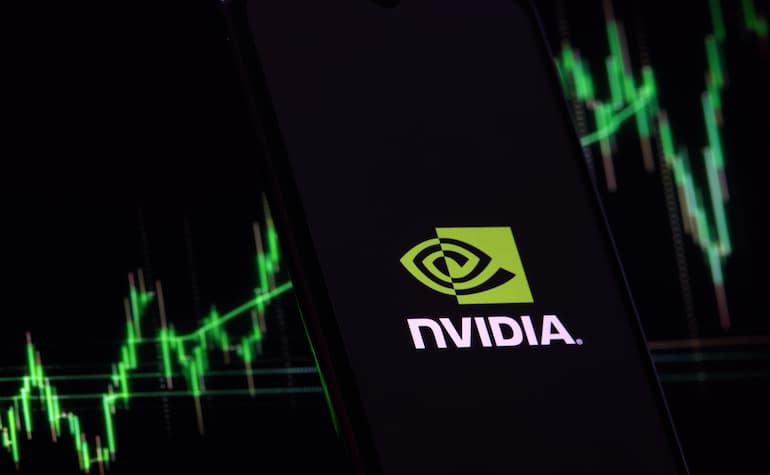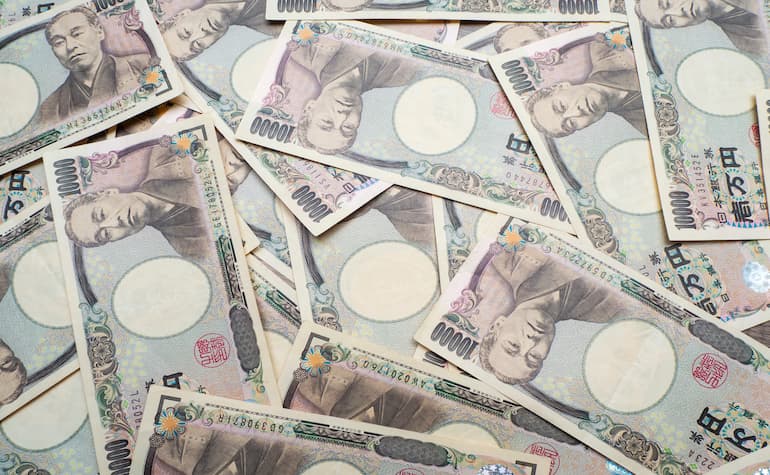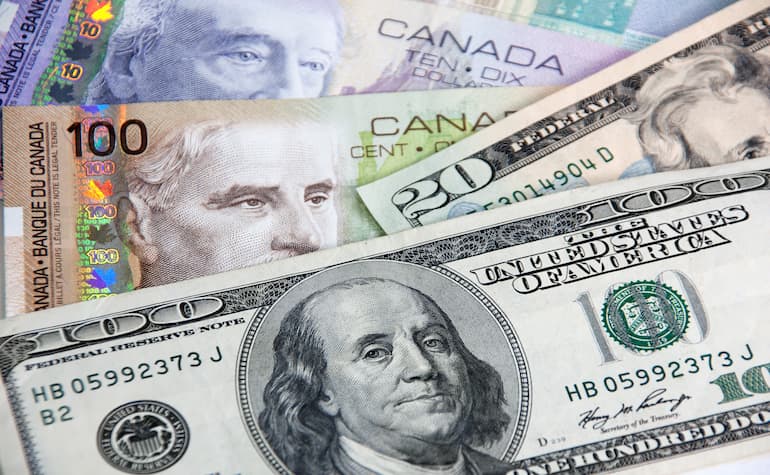ข่าวสารตลาด & มุมมองเชิงลึก
ก้าวนำตลาดด้วยมุมมองเชิงลึกจากผู้เชี่ยวชาญ ข่าวสาร และการวิเคราะห์ทางเทคนิค เพื่อเป็นแนวทางในการตัดสินใจซื้อขายของคุณ.

Multi-Timeframe (MTF) analysis is not just about checking the trend on the daily before trading on the hourly; ideally, it involves examining and aligning context, structure, and timing so that every trade is placed with purpose.
When done correctly, MTF analysis can filter market noise, may help with timing of entry, and assist you in trading with the trending “tide,” not against it.
Why Multi-Timeframe Analysis Matters
Every setup exists within a larger market story, and that story may often define the probability of a successful trade outcome.
Single-timeframe trading leads to the trading equivalent of tunnel vision, where the series of candles in front of you dominate your thinking, even though the broader trend might be shifting.
The most common reason traders may struggle is a false confidence based on a belief they are applying MTF analysis, but in truth, it’s often an ad-hoc, glance, not a structured process.
When signals conflict, doubt creeps in, and traders hesitate, entering too late or exiting too early.
A systematic MTF process restores clarity, allowing you to execute with more conviction and consistency, potentially offering improved trading outcomes and providing some objective evidence as to how well your system is working.
Building Your Timeframe Hierarchy
Like many effective trading approaches, the foundation of a good MTF framework lies in simplicity. The more complex an approach, the less likely it is to be followed fully and the more likely it may impede a potential opportunity.
Three timeframes are usually enough to capture the full picture without cluttering up your chart’s technical picture with enough information to avoid potential contradiction in action.
Each timeframe tells a different part of the story — you want the whole book, not just a single chapter.

Scalpers might work on H1-M15-M5, while longer-term traders might prefer H4-H1-H15.
The key is consistency in approach to build a critical mass of trades that can provide evidence for evaluation.
When all three timeframes align, the probability of at least an initial move in your desired direction may increase.
An MTF breakout will attract traders whose preference for primary timeframe may be M15 AND hourly, AND 4-hourly, so increasing potential momentum in the move simply because more traders are looking at the same breakout than if it occurred on a single timeframe only.
Applying MTF Analysis
A robust system is built on clear, unambiguous statements within your trading plan.
Ideally, you should define what each timeframe contributes to your decision-making process:
- Trend confirmed
- Structure validated
- Entry trigger aligned
- Risk parameters clear
When you enter on a lower timeframe, you are gaining some conviction from the higher one. Use the lower timeframe for fine-tuning and risk control, but if the higher timeframe flips direction, your bias must flip too.
Your original trading idea can be questioned and a decision made accordingly as to whether it is a good decision to stay in the trade or, as a minimum action, trail a stop loss to lock in any gains made to date.
Putting MTF into Action
So, if the goal is to embed MTF logic into your trade decisions, some step-by-step guidance may be useful on how to make this happen
1. Define Your Timeframe Stack
Decide which three timeframes form your trading style-aligned approach.
The key here is that as a starting point, you must “plant your flag” in one set, stick to it and measure to see how well or otherwise it works.
Through doing this, you can refine based on evidence in the future.
One tip I have heard some traders suggest is that the middle timeframe should be at least two times your primary timeframe, and the slowest timeframe at least four times.
2. Build and Use a Checklist
Codify your MTF logic into a repeatable routine of questions to ask, particularly in the early stages of implementing this as you develop your new habit.
Your checklist might include:
- Is the higher-timeframe trend aligned?
- Is the structure supportive?
- Do I have a valid trigger?
- Is risk clearly defined?
This turns MTF from a concept into a practical set of steps that are clear and easy to action.
3. Consider Integrating MTF Into Open Trade Management
MTF isn’t just for entries; it can also be used as part of your exit decision-making.
If your higher timeframe begins showing early signs of reversal, that’s a prompt to exit altogether, scale out through a partial close or tighten stops.
By managing trades through the same multi-timeframe approach that you used to enter, you maintain logical consistency across the entire lifecycle of the trade.
Final Action
Start small. Choose one instrument, one timeframe set, and one strategy to apply it to.
Observe the clarity it adds to your decisions and outcomes. Once you see a positive impact, you have evidence that it may be worth rolling out across other trading strategies you use in your portfolio.
Final Thought
Multi-Timeframe Analysis is not a trading strategy on its own. It is a worthwhile consideration in ALL strategies.
It offers a wider lens through which you see the market’s true structure and potential strength of conviction.
Through aligning context, structure, and execution, you move from chasing an individual group of candles to trading with a more robust support for a decision.


One Cancels the Other (OCO) is a trading strategy commonly used in financial markets, including options trading. It is a conditional order that allows traders to place two orders simultaneously, with one order serving as a hedge or protection against the other. The primary purpose of OCO orders is to manage risk and limit potential losses while still capitalizing on potential gains.
OCO orders are often used to set up two different types of orders, for example, a stop order and a limit order, for the same underlying security. Example: 1. Stop Order: This is an order to buy or sell an option when the market price reaches a specified trigger level, known as the "stop price." For example, if you hold a long call option and want to protect yourself from substantial losses if the market moves against you, you can place a stop order to sell that call option if the underlying stock's price falls below a certain level. 2.
Limit Order: This is an order to buy or sell an option at a specific price or better. In an OCO order, this order is typically placed at a more favorable price compared to the current market price. For example, if you hold a long call option and want to take profits when the market price reaches a certain level, you can place a limit order to sell that call option at that predetermined profit level.
The OCO order then links these two orders, stipulating that if one of them is executed, the other will be automatically canceled. Here's a breakdown of the scenarios: - If the market price reaches the stop price specified in the stop order, the stop order becomes a market order, and it is executed. At the same time, the limit order is canceled. - If the market price reaches the limit price specified in the limit order, the limit order is executed.
The stop order is then canceled. - If neither the stop nor the limit condition is met, both orders remain active until one of them is triggered or manually canceled by the trader. OCO orders can be useful for managing risk and protecting profits in options trading. They allow traders to set predefined exit points for their positions, reducing the need for constant monitoring of the markets.
Practical Considerations and Tips: While OCO and stop-limit orders offer numerous advantages to options traders, it's important to approach their use with a clear strategy and understanding of market conditions. Here are some practical considerations and tips for effectively implementing these orders: Define Your Objectives: Before placing OCO or stop-limit orders, have a clear understanding of your trading objectives. Are you looking to lock in profits, limit losses, or both?
Your objectives will determine how you configure these orders. Monitor Market Volatility: Be mindful of market volatility when setting stop and limit prices. Highly volatile markets may require wider price ranges to avoid premature order execution or missed opportunities.
Practice Risk Management: OCO and stop-limit orders are powerful risk management tools, but they are not foolproof. Always be prepared for unexpected market moves and consider using them in conjunction with other risk management strategies. Regularly Review and Adjust: Market conditions change, and so should your orders.
Regularly review and adjust your OCO and stop-limit orders to align with your evolving trading goals and market outlook. Stay Informed: Stay informed about market news and events that could impact your positions. Sudden developments may require immediate adjustments to your orders.


Trading terms glossary A - B - C - D - E - F - G - H - I - J - K - L - M - N - O - P - Q - R - S - T - U - V - W - X - Y - Z - B Backwardation This is a state when the price of a futures contract is trading lower than the expected spot price. Learn more about backwardation Base rate The interest rate a central bank will charge for lending to other banks. Base currency In trading the term base currency is the first currency listed in a currency pair.
It can also mean the accounting currency used by banks and other businesses. Basis point A basis point is a unit of measurement, equal to one one-hundredth of a percent (0.01%). It is used to quantify the change between two percentages, also sometimes referred to as ‘bp’, which is pronounced ‘bip’ or ‘beep’.
Bear trader A bear trader wants to short sell financial instruments, believing that a market, asset or financial instrument is heading in a downward trajectory. Opposite to "bulls" or "bull traders." Bear market When the market is on a sustained downward trajectory, with the majority of investors selling. Bearish Being bearish means a trader believes that a market, asset or financial instrument is going to experience a downward trajectory.
Opposite of "bullish." Bear call spread A strategy in options trading, combining a short call option and a long call option with a higher strike. Basically, a short call with lower strike price + long call with a higher strike price. Beta A measure of the risk or volatility of a security or portfolio, when compared to the wider market.
Bid The price a trader is willing to pay for a certain asset. Bid-Ask Spread The difference between the best buy price (bid) and best sell price (offer) for an asset. Learn more about the Bid-Ask Spread Blue chip stocks Blue-chip stocks are the shares of companies that are reputable, financially stable and long-established.
A company that is considered blue chip is generally large, at the top of its sector, features on a recognised index, and has a well-known brand. Blue chip stocks may change over time and are therefore difficult to define. Bollinger bands Bollinger bands are a popular form of technical price indicator, based on an asset's simple moving average (SMA).
Often referred to as a 'lagging indicator,' as they are reactive not predictive. Learn more about using Bollinger Bands in FX Trading. Bond trading Bond trading is one way of making profit from fluctuations in the value of corporate or government bonds.
This definition can also mean the trading of bonds by a broker on the floor of an exchange. Learn more about Bond Trading Bonds Bonds investment securities, that involve lending money to an institution for a fixed period of time. They can come in two varieties: corporate bonds and government bonds.
Book value The monetary value of an asset reflected in an entity's accounting books/balance sheet, not based on future appreciation or depreciation. Bottom line A company’s bottom line refers to the profit, net income, net earnings or earnings per share (EPS) of a business. Brent crude Brent crude is one of the major oil benchmarks used by those trading oil contracts, futures and derivatives.
As oil from different fields varies in value, oil benchmarks are a way for traders to understand which types of oil they are trading. Brent crude is mostly drilled from the North Sea oilfields: Brent, Forties, Oseberg and Ekofisk (BFOE). Broker A broker is an independent person or a company that organises and executes financial transactions on behalf of another party.
They can do this across a number of different asset classes, including stocks, forex, real estate and insurance. A broker will normally charge a commission for the order to be executed. Bull trader Bull traders believe that a market, instrument, or sector is going on an upward trajectory.
Opposite to "bears" or "bear traders." Bull call spread A trading strategy that takes advantage of upward market movements, while limiting profit and loss. It is used by trader when they believe a stock will have a limited increase in price. Learn more about Bull Call Spreads Bull market A market when the majority of investors are buying.
Opposite of "bear market." Bullish Expecting that a market, asset or financial instrument is going to experience an upward trend and acting accordingly. Opposite of "bearish." Buy Taking ownership of a financial asset, whether it is a commodity, stock or another asset. Buyer/Taker Refers to the holder of an option, who has the right to purchase the underlying security.


Nvidia has been the star of the US markets since the AI hype kicked off late 2022. The trillion-dollar chip manufacturer’s shares have almost tripled in 2023 alone, with the price increasing every month so far this year. In May, Nvidia surprised the markets by posting earnings and revenue figures well above analysts’ expectations.
This sent price rocketing and adding almost $184B USD to the market cap during the following daily session. Nvidia is set to release their Q2 results on Wednesday, so the markets will be watching to see if they have been able to maintain the strong momentum over the past quarter. Markets are estimating earnings of $2.076B and revenue of $11.14B.
Technically, the price has been ranging sideways between $400-$480 since around June 2023. There is a strong support level around $400 that held multiple times in the past few months, so this will be a key level to hold if the earnings on Wednesday are below expectations. If earnings beat expectations, the price could head back north towards the resistance zone at about $470.
Traders will be watching this level to see if there is enough momentum to break through to all- time highs again. With the AI hype cooling off slightly over the past few months, it will be interesting to see how Nvidia performed over the past quarter and if the momentum was sustainable.


In 2022, it was believed that the Bank of Japan (BoJ) intervened three times, in September when the USDJPY was at 145.80, and in October and November when the USDJPY was at the 151.50 and 146.50 price levels respectively. For each of the 3 interventions, the USDJPY reversed strongly by more than 500pips. With the recent steady climb in the USDJPY in August, rising from 138 to the high of 146.50, there have been increasing comments from members of the BoJ and Japanese government regarding the need for an intervention.
The BoJ has avoided interventions, possible for the interim, by announcing increased flexibility on its yield-curve control (YCC). However, the markets viewed the action as insufficient and the stronger DXY continued to take the USDJPY higher. Continued upside on the USDJPY cannot be ruled out, especially if the DXY continues to strengthen significantly.
However, if the USDJPY continues to trade between the 145 and 146.50 price range, the possibility for an intervention from the BoJ increases. For an impactful intervention, the scale and timing of the decision would not be scheduled. A signal would be based on price volatility, in this case, if the USDJPY breaks through the bullish Ichimoku cloud and down from the 145-round number support level, which aligns with the 23.6% Fibonacci retracement level.
A reversal of 500 pips, similar to previous interventions, could see the USDJPY retest the trendline, along the 140 price level, with interim support at the 61.8% Fibonacci retracement and 141.60 price level.


USDJPY briefly pushed above 145 in today’s session before a sharp pullback, with traders wary of recent jawboning from Japanese officials regarding the “one sided” trade in the Yen may be setting the Japanese MoF up for another round on FX intervention that we saw late in 2022. Some sharp moves in the Yen in the last day have had traders speculating the MoF may have already intervened on a small scale but there was no official confirmation of intervention, MoF officials said they have no comment on the matter, but “they are mindful of the one-sided moves”. Looking at a close up of last years price action in the USDJPY may give traders a clue as to what to expect, with minor interventions seeing USDJPY spike lower, only to rise again until a major intervention or surprise policy change sustains a move lower in the cross rate.
This is a fairly predictable scenario from my experience with JPY interventions over the years. Any USDJPY traders would be wise to be familiar with the price action from these previous intervention efforts.


The USD/CAD pair experienced a relatively uneventful session after Bank of Canada (BoC) decided to keep interest rates on hold. However, what caught the attention of traders was the hawkish tone in the central bank's language. Similar to many central banks globally, the BoC is cautious about raising rates further until they thoroughly assess the inflation landscape.
Still, they've left the door open for potential rate hikes in the future. Surprisingly, this hawkish stance from the BoC didn't have a significant impact on the Canadian dollar against the US. The strength of the US dollar remained dominant, keeping the USD/CAD pair relatively flat during the session.
Currently, the pair finds itself at a crucial resistance level, which it has unsuccessfully attempted to breach three times since April. The BoC's hawkish language appears to have halted the pair's upward momentum, preventing a breakout, but wasn’t enough to push the pair south. Since mid-July, the USD/CAD pair has experienced an impressive 4% surge, driven by a resilient US dollar and the US Federal Reserve's commitment to maintaining higher interest rates to combat inflation.
However, from the technical view, a slightly bearish divergence is forming on the daily RSI, indicating the move might be running out of steam and a potential correction could be on the cards. In this high inflation environment, the pair's direction will likely hinge on crucial upcoming data releases in the weeks ahead. In addition to the technical setups, traders should keep a close watch on the fundamentals to help navigate potential shifts in direction.

